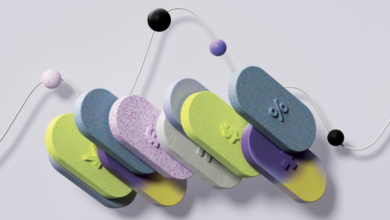
With Mobile World Congress 2023 taking place shortly after ChatGPT had made a splash amongst the masses, this year saw attendees reinvigorated about Artificial Intelligence (AI) and the general advancements of technology. It finally felt as though society had clawed its way out of the post-pandemic stagnation – looking towards the promise of the future and putting those years lost to COVID-19 behind them. Many attendees returned from the event feeling energised, and full of observations about the sheer innovation within the technology space. Exploring those innovations, let’s start by looking at the metaverse, which was top of the agenda for many attendees.
Metaverse was hot (and Web 3.0 was not)
Exhibitors with any sort of Augmented Reality (AR) or Virtual Reality (VR) products were guaranteed a line at their booth. Enchantment with the metaverse was extremely high, and conferencegoers seemed delighted by the AR/VR products they saw.
However, many companies seemed focused on implementing the fun factor into their products, rather than the practical, but killer apps will make these technologies viable in the long term. The quality of the underlying hardware and software of the apps at MWC 2023 could be seen as underwhelming. Nevertheless, the enthusiasm around this is promising, and the metaverse will quickly evolve from a silly distraction to an effective business tool.
What’s more, it was refreshing to see the metaverse replace ‘Web 3.0’ as the talk of the town.
The promises and challenges of connected devices
Putting the metaverse aside, MWC also raised some important questions regarding connected devices. For example, is there anything that can’t be connected? This question is important, not least because the show was the perfect place for leaders within a variety of sectors – such as healthcare, automotive, and education – to chime in on the conversation.
Essentially, if humans can connect devices on the moon, then the answer is yes; there is not much that cannot be connected here on Earth. Having established the ubiquitous potential of connected devices, thought leaders at the event pondered a derivative question: just because anything can be connected, does it mean it should?
From a healthcare standpoint, digital health has the incredible potential to bridge healthcare inequalities. The COVID-19 pandemic illuminated the healthcare divide amongst the most vulnerable – the poor, children, senior citizens, and those with complex medical needs. In addition, connected home devices can help bridge the gap, but they must be implemented thoughtfully, taking into consideration aspects such as privacy and security.
It was clear in conference sessions that panelists had similar sentiments from the perspective of their fields – just because we can connect everything, does not mean we should. The general consensus is that connected devices can be transformative, but only when they are implemented mindfully.
Artificial Intelligence is back in style
Only a few months ago, there were articles published lamenting the lack of interest and funding for Artificial Intelligence in the start-up world. This is disappointing, not least because AI goes through hype cycles regularly, but continues to march on even when it is out of the spotlight.
AI is fueled by algorithms, training data, and processor heft. All three of these areas have been steadily improving, through fanfare and through not. Indeed, algorithms are becoming increasingly clever, training data sets are getting more vast, and chip technology continues to evolve. Thus, the only surprising element about the introduction of ChatGPT, was that everyone was surprised about it. However, this was bound to happen when engineers combined advancing AI technology with a universally appreciated practical application.
Unsurprisingly, Generative AI – such as ChatGPT – was a key talking point at the conference, with the general sentiment being fascination with a generous helping of trepidation. For many, this was their first time truly understanding the power of artificial intelligence and, with that, comes the excitement about possibilities and hesitance about its potential shortcomings.
Like connected devices, AI technology needs to be implemented thoughtfully. For example, if we consider social media and how people embraced it initially, without reservation, it was only later that people realised that it had a dark, seedy underbelly, which has contributed to mental health issues, misinformation, and other nefarious results.
Ultimately, one of the biggest takeaways from MWC 2023 was the fact that technology has so much potential right now – across connected devices, generative AI, metaverse, and more. However, being at this pivotal point means a lot of thought needs to be carried out before any implementation.





